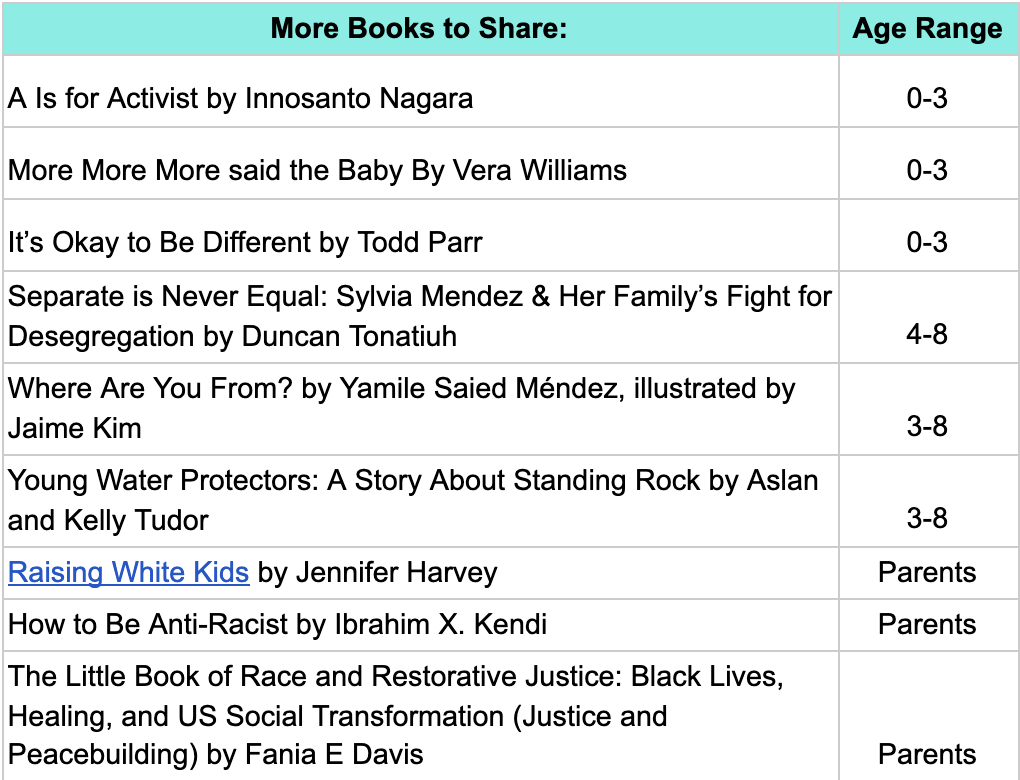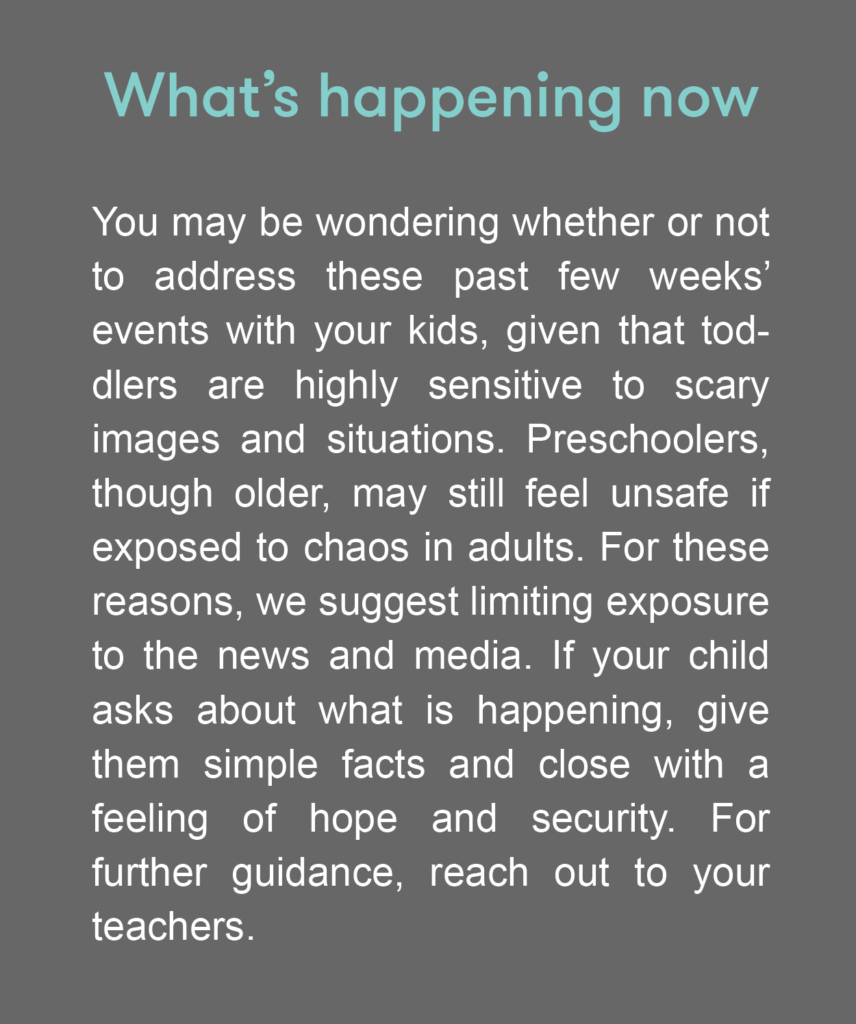It is truly humbling to recognize how much work still must be done to bring about meaningful change. As parents and educators, this responsibility particularly lands on us as we raise our children to grow up to be compassionate human beings.
Your children may have questions and will continue to have questions. And, like us, you probably have only a fraction of the relevant answers. In this post, we want to offer some resources that may be helpful as you talk to your children in developmentally appropriate ways about race and diversity.
How children see race in their early years
Children recognize race and formulate perceptions within the first few months of their life (see this developmental chart). In the past, a commonly taken approach was that of being “colorblind” to race, but recent research shows that this approach not only denies children the validity of their experiences, but also inhibits them from being change agents for the world. Studies also show that talking explicitly about race with children creates more positive attitudes about people of different races (Vittrup, B., 2011). So having discussions about race, while difficult, is both important and necessary. With children, one of the easiest ways to introduce and discuss diversity and racism can be through books.
What are we reading?
For young children, delving into the current issues across our nation may be too overwhelming and complex to process. However, we can still help our children become more racially conscious and view diversity as a strength in our society. As with many other topics, often a way into a child’s heart is through storytelling and books. Below are a few amongst the many we have found that are age appropriate and great conversation starters. Along with these, we encourage you to check out some titles that not only focus on racism explicitly, but also ones that have diverse central characters.
- Brave Ballerina: The story of Janet Collins By Michelle Meadows (Ages 4-8) A story about Janet Collins, a girl who wanted to be a ballerina during times of racial segregation in the 1930s and 1940s.

- Whoever You Are: By Mem Fox (Ages 3-10) For all ages, this book touches on ideas of us all being different on the outside, but being human on the inside, with the ability to experience feelings, desires, and needs.
- Lovely By Jess Hong (Ages 4-8) This book expands beyond race, pointing out all differences between people while bringing home the message that we are all different and that is lovely.
- Happy In our Skin: Fran Manushkin (Ages 2-5) This book explains and celebrates diversity. The story follows a multi-racial family through their home and city.
- My Face Book: Star Bright Books, Star Bright Books & Baby Faces by Margaret Miller (Infants and Toddlers) Baby Faces and My Face Book are both books perfect for our infants and toddlers. These books provide a diverse range of races. These books normalize having characters and representations of different races. Though it is not enough to normalize the idea of different races, it is a start for younger ones especially to have diverse books in their library (these books also give a chance for parents to practice talking about race).
Additional Resources
We’ve put together this non-exhaustive resource guide for racial equality & diversity with a focus on children, parents and caregivers. It includes links to videos, articles, books, and workshops and we encourage you to continue to add.
Some of these resources are shared below;
- Where to find diverse children books
- 31 Children’s Books to Support Conversations on Race, Racism, & Resistance
- “TOP TEN” race conscious things you can say to your child to advance racial justice (With a section dedicated just to children’s books and what to say!)
- These Books Can Help You Explain Racism and Protest to Your Kids
- Tools to Raise an Anti-Racist Generation

Other ways to introduce Race and Diversity:
- People-Colored Crayons (These crayons can lend a hand to our drawings, making them more inclusive and speak to the fact that we are all much more than the one crayon that is always used for skin color).
- Color Of Me Song: Sesame Street (A good addition to the sesame street book: We are same, we are different or a stand alone, this song sings about the different shades of skin and how proud they are to be who they are: a message that is central to individuality and diversity)
Learning about race and diversity is a lifelong exploration. Don’t be afraid to get started! It’s okay to start small and start young. There are a lot of resources out there and it’s important to realize that at some level, you just have to jump in, even if it is out of your comfort zones. As always, reach out if you have any questions, we are always here.
Till Next Post,
Aleezeh Makani
Ethos Early Learning Center Educator
06/19/2020
